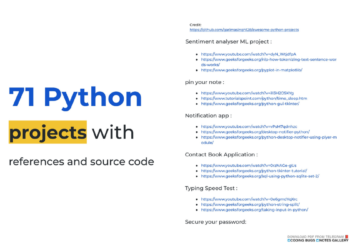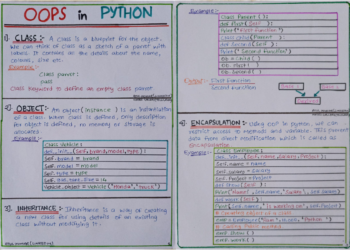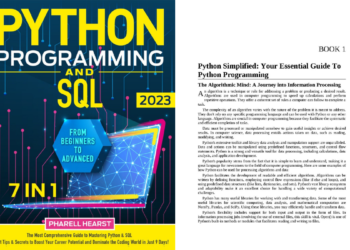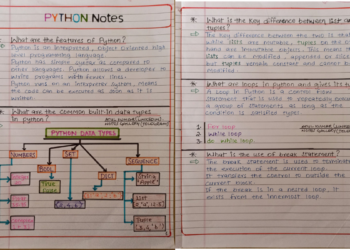This article focuses on how one can parse a given XML file and extract some useful data out of it in a structured way.
XML: XML stands for eXtensible Markup Language. It was designed to store and transport data. It was designed to be both human- and machine-readable.That’s why, the design goals of XML emphasize simplicity, generality, and usability across the Internet.
The XML file to be parsed in this tutorial is actually a RSS feed.
RSS: RSS(Rich Site Summary, often called Really Simple Syndication) uses a family of standard web feed formats to publish frequently updated informationlike blog entries, news headlines, audio, video. RSS is XML formatted plain text.
- The RSS format itself is relatively easy to read both by automated processes and by humans alike.
- The RSS processed in this tutorial is the RSS feed of top news stories from a popular news website. You can check it out here. Our goal is to process this RSS feed (or XML file) and save it in some other format for future use.
Python Module used: This article will focus on using inbuilt xml module in python for parsing XML and the main focus will be on the ElementTree XML API of this module.
Implementation:
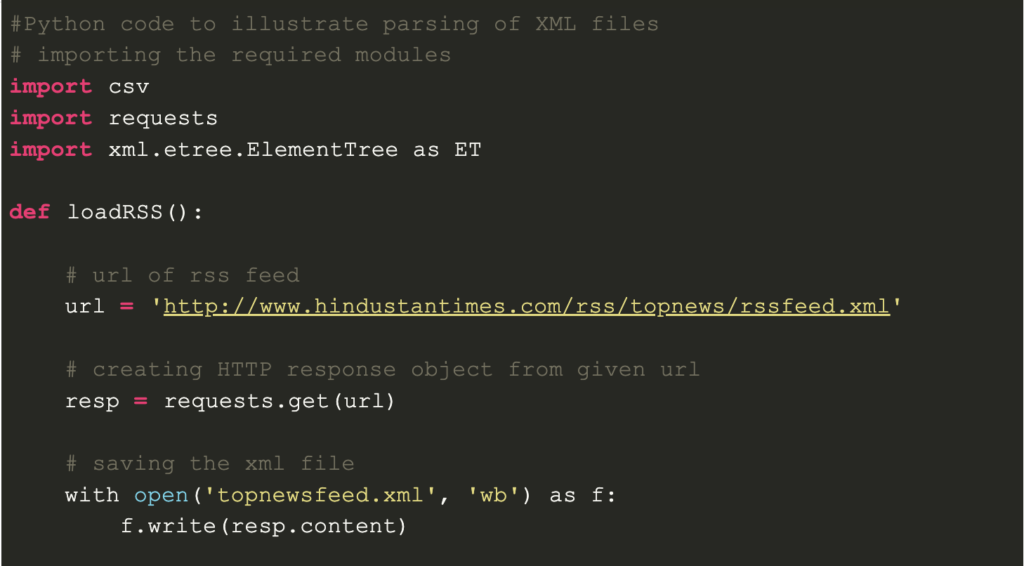
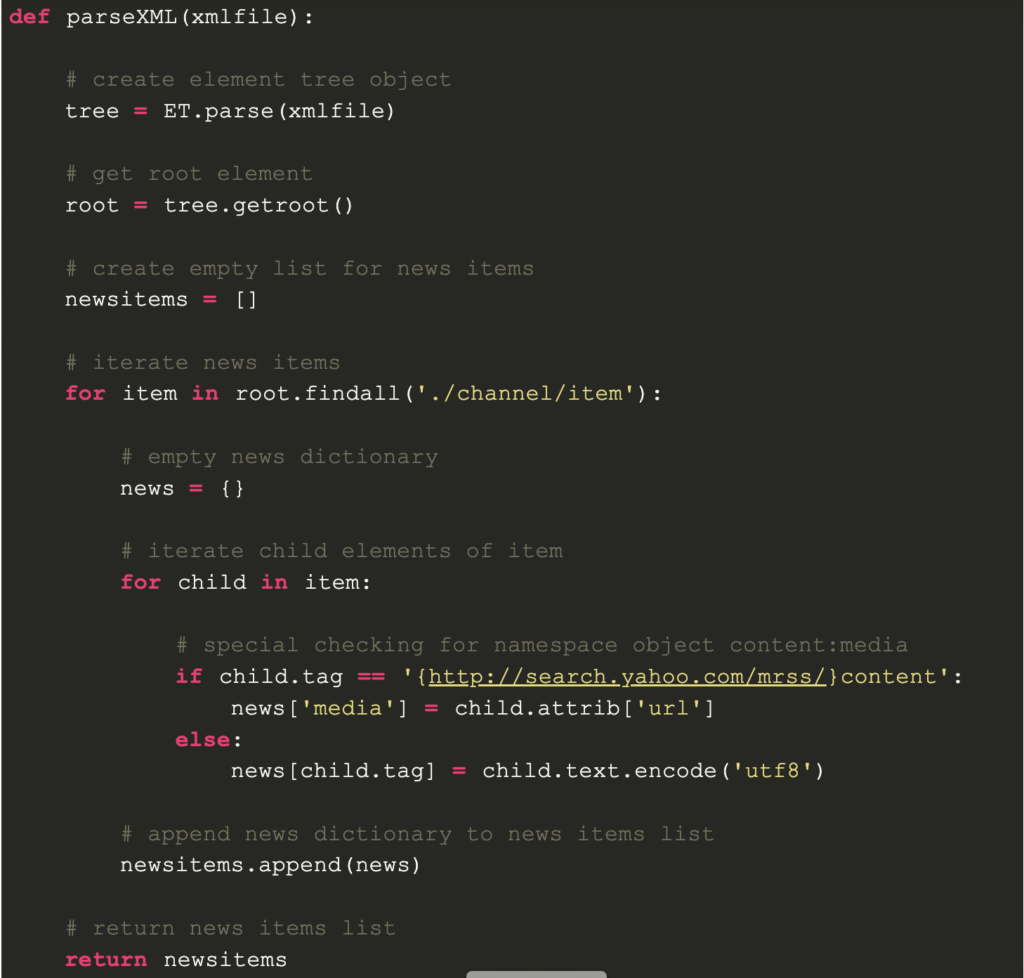
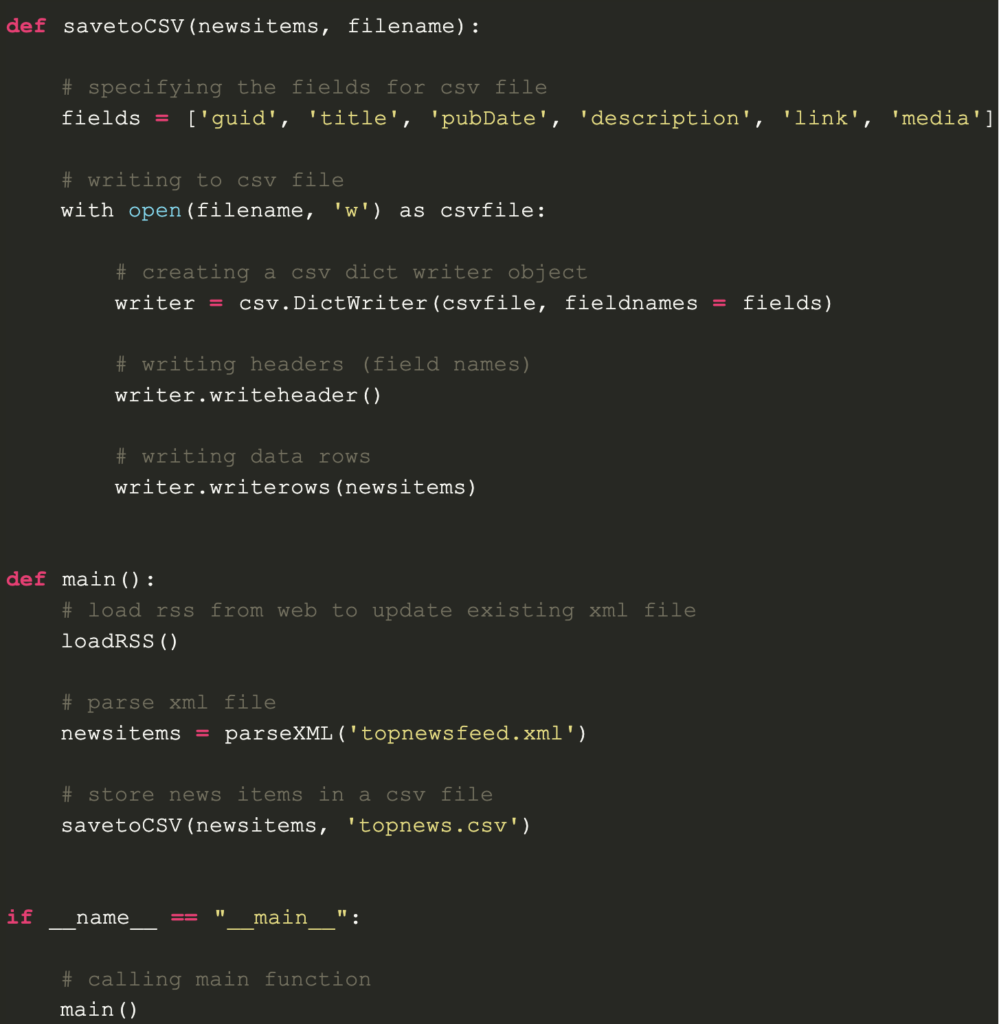
The above code will:
- Load RSS feed from specified URL and save it as an XML file.
- Parse the XML file to save news as a list of dictionaries where each dictionary is a single news item.
- Save the news items into a CSV file.
Let us try to understand the code in pieces:
- Loading and saving RSS feed
def loadRSS():
# url of rss feed
url = 'http://www.hindustantimes.com/rss/topnews/rssfeed.xml'
# creating HTTP response object from given url
resp = requests.get(url)
# saving the xml file
with open('topnewsfeed.xml', 'wb') as f:
f.write(resp.content)
Here, we first created a HTTP response object by sending
Here, we first created an HTTP response object by sending an HTTP request to the URL of the RSS feed. The content of response now contains the XML file data which we save as topnewsfeed.xml in our local directory.
For more insight into how requests module works, follow this article:
GET and POST requests using Python
- Parsing XML
We have created parseXML() function to parse XML file. We know that XML is an inherently hierarchical data format, and the most natural way to represent it is with a tree. Look at the image below for example:
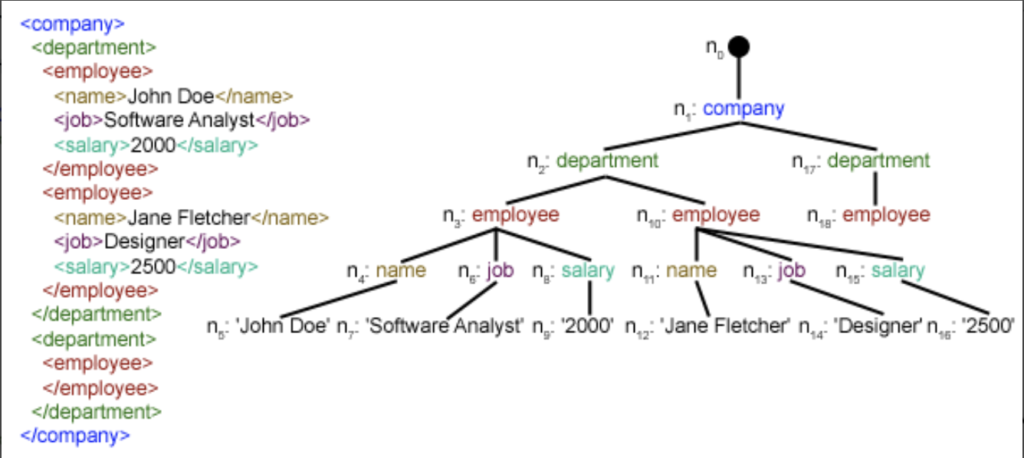
Here, we are using xml.etree.ElementTree (call it ET, in short) module. Element Tree has two classes for this purpose – ElementTree represents the whole XML document as a tree, and Element represents a single node in this tree. Interactions with the whole document (reading and writing to/from files) are usually done on the ElementTree level. Interactions with a single XML element and its sub-elements are done on the Element level.
Ok, so let’s go through the parseXML() function now:
tree = ET.parse(xmlfile)
Here, we create an ElementTree object by parsing the passed xmlfile.
root = tree.getroot()
getroot() function return the root of tree as an Element object.
for item in root.findall('./channel/item'):Now, once you have taken a look at the structure of your XML file, you will notice that we are interested only in item element.
./channel/item is actually XPath syntax (XPath is a language for addressing parts of an XML document). Here, we want to find all item grand-children of channel children of the root(denoted by ‘.’) element.
You can read more about supported XPath syntax here.
You can read more about supported XPath syntax here.
for item in root.findall('./channel/item'):
# empty news dictionary
news = {}
# iterate child elements of item
for child in item:
# special checking for namespace object content:media
if child.tag == '{http://search.yahoo.com/mrss/}content':
news['media'] = child.attrib['url']
else:
news[child.tag] = child.text.encode('utf8')
# append news dictionary to news items list
newsitems.append(news)Now, we know that we are iterating through item elements where each item element contains one news. So, we create an empty news dictionary in which we will store all data available about news item. To iterate though each child element of an element, we simply iterate through it, like this:
for child in item:
Now, notice a sample item element here:
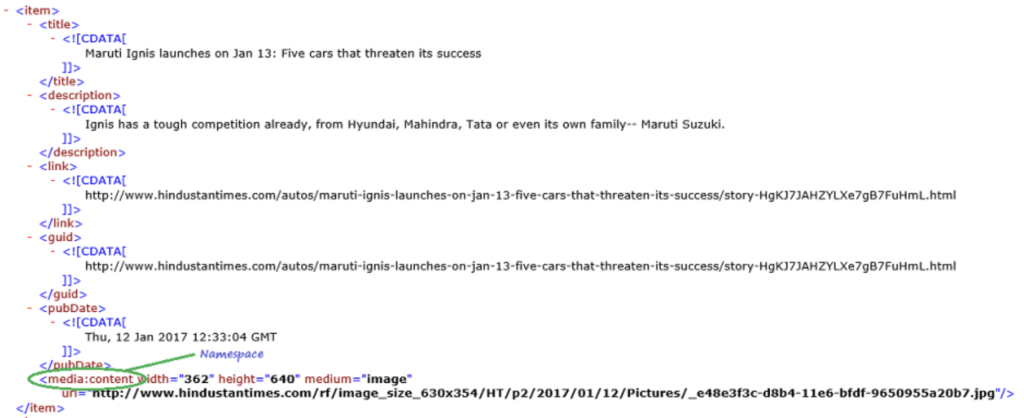
We will have to handle namespace tags separately as they get expanded to their original value, when parsed. So, we do something like this:
if child.tag == ‘{http://search.yahoo.com/mrss/}content’: news[‘media’] = child.attrib[‘url’]
child.attrib is a dictionary of all the attributes related to an element. Here, we are interested in url attribute of media:content namespace tag.
Now, for all other children, we simply do:
news[child.tag] = child.text.encode(‘utf8’)
child.tag contains the name of child element. child.text stores all the text inside that child element. So, finally, a sample item element is converted to a dictionary and looks like this:
{‘description’: ‘Ignis has a tough competition already, from Hyun…. , ‘guid’: ‘http://www.hindustantimes.com/autos/maruti-ignis-launch…. , ‘link’: ‘http://www.hindustantimes.com/autos/maruti-ignis-launch…. , ‘media’: ‘http://www.hindustantimes.com/rf/image_size_630x354/HT/… , ‘pubDate’: ‘Thu, 12 Jan 2017 12:33:04 GMT ‘, ‘title’: ‘Maruti Ignis launches on Jan 13: Five cars that threa….. }
Then, we simply append this dict element to the list newsitems.
Finally, this list is returned.
- Saving data to a CSV file
Now, we simply save the list of news items to a CSV file so that it could be used or modified easily in future using savetoCSV() function. To know more about writing dictionary elements to a CSV file, go through this article:
Working with CSV files in Python
So now, here is how our formatted data looks like now:
So now, here is how our formatted data looks like now:
As you can see, the hierarchical XML file data has been converted to a simple CSV file so that all news stories are stored in form of a table. This makes it easier to extend the database too.
Also, one can use the JSON-like data directly in their applications! This is the best alternative for extracting data from websites which do not provide a public API but provide some RSS feeds.
All the code and files used in above article can be found here.




